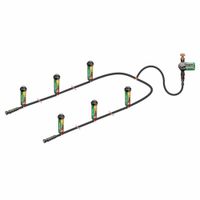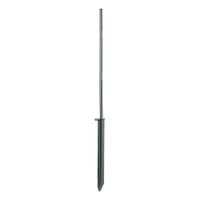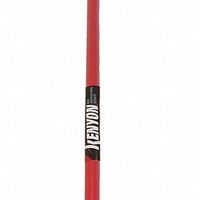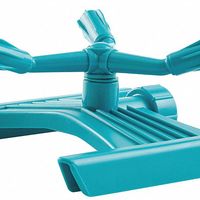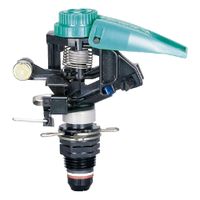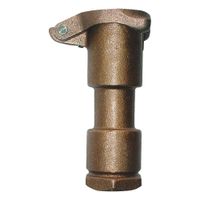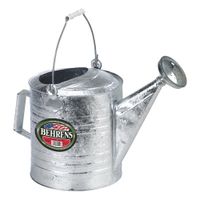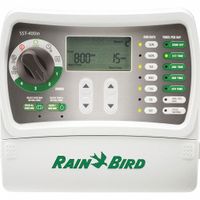Call +(254) 703 030 000 / 751 483 999 / 721 704 777
- Home
- Outdoor Equipment
- Watering Equipment Irrigation Systems
.....Read More
Frequently Asked Questions
What is the best type of irrigation system for my garden?
The best type of irrigation system for your garden depends on several factors, including the size of your garden, the types of plants you have, your budget, and your water availability. Here are some options:
1. **Drip Irrigation**: Ideal for gardens with a variety of plants, drip irrigation delivers water directly to the plant roots through a network of tubes, emitters, and valves. It is highly efficient, reducing water waste and minimizing evaporation. This system is suitable for vegetable gardens, flower beds, and shrubs.
2. **Soaker Hoses**: These are porous hoses that allow water to seep out slowly along their length. They are easy to install and work well for row plantings or closely spaced plants. Soaker hoses are cost-effective and conserve water by delivering it directly to the soil.
3. **Sprinkler Systems**: Best for larger gardens or lawns, sprinkler systems can cover a wide area and are available in various types, such as oscillating, rotary, or stationary. They are less efficient than drip systems due to evaporation and wind drift but are effective for even water distribution.
4. **Manual Watering**: Using a hose or watering can is suitable for small gardens or areas with specific watering needs. It allows for precise control but can be time-consuming and less consistent.
5. **Automated Systems**: These can be integrated with drip or sprinkler systems and are controlled by timers or smart controllers. They offer convenience and ensure consistent watering schedules, which is beneficial for maintaining plant health.
Consider your garden's specific needs, local climate, and water restrictions when choosing an irrigation system. Drip irrigation is often recommended for its efficiency and water conservation benefits, but the best choice will align with your garden's unique requirements.
How do I choose the right garden hose nozzle?
To choose the right garden hose nozzle, consider the following factors:
1. **Material**: Opt for durable materials like metal or heavy-duty plastic. Metal nozzles, such as brass or aluminum, are more durable and long-lasting, while plastic ones are lighter and less expensive.
2. **Spray Patterns**: Look for a nozzle with multiple spray patterns to accommodate different watering needs. Common patterns include mist, shower, jet, flat, and soaker. More patterns offer greater versatility.
3. **Grip and Comfort**: Choose a nozzle with an ergonomic design and a comfortable grip, especially if you plan to use it for extended periods. Rubberized grips can prevent slipping and reduce hand fatigue.
4. **Flow Control**: A nozzle with adjustable flow control allows you to regulate water pressure, which is useful for delicate plants or high-pressure cleaning tasks.
5. **Trigger Design**: Consider the trigger mechanism. A rear-trigger design is common, but a front-trigger or thumb control can be easier to use and reduce hand strain.
6. **Locking Mechanism**: A nozzle with a locking mechanism can keep the water flowing without continuous pressure on the trigger, which is helpful for prolonged use.
7. **Compatibility**: Ensure the nozzle fits your hose size and type. Most nozzles are designed for standard hose sizes, but check for compatibility if you have a non-standard hose.
8. **Purpose**: Determine the primary use of the nozzle. For example, a high-pressure nozzle is ideal for cleaning, while a gentle shower pattern is better for watering plants.
9. **Price and Warranty**: Balance your budget with quality. A slightly higher investment in a durable nozzle can save money in the long run. Check for warranties as an indicator of quality and durability.
By considering these factors, you can select a garden hose nozzle that meets your specific needs and preferences.
What are the benefits of using a drip irrigation system?
Drip irrigation offers numerous benefits, making it an efficient and sustainable method for watering plants. Firstly, it significantly conserves water by delivering it directly to the plant roots, minimizing evaporation and runoff. This targeted approach can save up to 50% more water compared to traditional irrigation methods.
Secondly, drip irrigation enhances plant health and growth. By providing consistent moisture levels, it reduces plant stress and promotes optimal growth conditions. This system also minimizes the risk of diseases that thrive in wet foliage, as water is applied directly to the soil rather than the leaves.
Thirdly, it improves nutrient management. Fertilizers can be applied through the drip system, ensuring that nutrients are delivered directly to the root zone, enhancing their effectiveness and reducing waste. This precision feeding can lead to better crop yields and quality.
Additionally, drip irrigation is highly adaptable and can be customized to suit various landscapes and plant types. It is suitable for uneven terrain and can be used in areas with limited water supply. The system can be automated, reducing labor costs and allowing for more efficient water management.
Moreover, drip irrigation reduces weed growth. By delivering water only to the desired plants, it limits the moisture available to weeds, thereby reducing their proliferation.
Finally, it is environmentally friendly. By conserving water and reducing runoff, it helps in preserving local water resources and minimizing soil erosion. The system's efficiency also contributes to lower energy consumption, as less water needs to be pumped compared to other irrigation methods.
In summary, drip irrigation is a water-efficient, cost-effective, and environmentally sustainable method that enhances plant health, optimizes nutrient delivery, and reduces labor and weed growth.
How often should I water my lawn with an automatic sprinkler system?
The frequency of watering your lawn with an automatic sprinkler system depends on several factors, including the type of grass, climate, season, and soil type. Generally, lawns require about 1 to 1.5 inches of water per week, including rainfall, to maintain healthy growth. Here’s a guideline to help you determine the watering schedule:
1. **Grass Type**: Cool-season grasses (e.g., Kentucky bluegrass, fescue) typically need more frequent watering during hot, dry periods, while warm-season grasses (e.g., Bermuda, zoysia) are more drought-tolerant.
2. **Climate and Season**: In hot, dry climates, you may need to water more frequently, while in cooler, wetter climates, less frequent watering is necessary. During the growing season (spring and summer), increase watering frequency, and reduce it in fall and winter.
3. **Soil Type**: Sandy soils drain quickly and may require more frequent watering, while clay soils retain moisture longer, allowing for less frequent watering.
4. **Watering Schedule**:
- **Spring and Fall**: Water 1-2 times per week.
- **Summer**: Water 2-3 times per week.
- **Winter**: Watering may not be necessary if the lawn is dormant.
5. **Time of Day**: Water early in the morning (between 4 a.m. and 10 a.m.) to reduce evaporation and fungal diseases.
6. **Adjust for Rainfall**: Use a rain sensor or manually adjust your system to avoid overwatering after rain.
7. **Check for Signs of Stress**: If the grass appears dull, footprints remain visible, or the soil is dry, increase watering frequency.
Regularly monitor your lawn’s condition and adjust the watering schedule as needed to ensure optimal health and growth.
How do I install a lawn sprinkler system?
1. **Plan the Layout**: Determine the areas needing irrigation. Sketch a layout, marking zones, sprinkler head types, and water source location.
2. **Check Water Pressure**: Measure your water pressure using a pressure gauge. Ensure it meets the requirements for your chosen sprinkler system.
3. **Obtain Permits**: Check local regulations and obtain necessary permits for installation.
4. **Purchase Materials**: Buy the sprinkler system kit, PVC pipes, fittings, valves, and a backflow preventer.
5. **Mark Sprinkler Locations**: Use flags to mark where each sprinkler head will be placed according to your plan.
6. **Dig Trenches**: Dig trenches 6-12 inches deep for the pipes, ensuring they connect all sprinkler locations.
7. **Install Pipes**: Lay PVC pipes in the trenches, connecting them with fittings. Use primer and cement for secure joints.
8. **Install Valves**: Connect control valves to the main water line. Use a manifold if installing multiple zones.
9. **Attach Sprinkler Heads**: Connect risers to the pipes and attach sprinkler heads. Adjust the heads for proper coverage.
10. **Install Backflow Preventer**: Connect the backflow preventer to the main water supply to prevent contamination.
11. **Connect to Water Source**: Attach the system to your water supply, ensuring all connections are secure.
12. **Install Controller**: Mount the controller in a convenient location. Connect it to the valves using low-voltage wires.
13. **Test the System**: Turn on the water and test each zone. Adjust sprinkler heads for optimal coverage and check for leaks.
14. **Backfill Trenches**: Once satisfied, backfill the trenches with soil, compacting it to avoid settling.
15. **Program Controller**: Set the watering schedule on the controller based on your lawn's needs.
What is the difference between a sprinkler head and a nozzle?
A sprinkler head and a nozzle are both components of irrigation and fire suppression systems, but they serve different functions and have distinct characteristics.
A sprinkler head is the entire assembly that is responsible for distributing water over a designated area. It is a crucial part of both irrigation systems for landscapes and fire suppression systems in buildings. In irrigation, sprinkler heads are designed to cover specific areas with water, ensuring even distribution to maintain healthy plant growth. They come in various types, such as pop-up, rotor, and impact heads, each suited for different applications and coverage areas. In fire suppression, sprinkler heads are activated by heat and release water to extinguish fires, with types including pendant, upright, and sidewall heads.
A nozzle, on the other hand, is a component of the sprinkler head that specifically controls the flow and pattern of the water being emitted. In irrigation systems, nozzles determine the spray pattern, distance, and water flow rate, allowing for precise control over how water is distributed. They can be adjusted or replaced to change the coverage area or to accommodate different water pressure levels. In fire suppression systems, nozzles are designed to disperse water in a specific pattern to maximize coverage and effectiveness in extinguishing fires.
In summary, the sprinkler head is the complete unit responsible for water distribution, while the nozzle is a part of the sprinkler head that controls the specifics of the water flow and pattern. Both are essential for the efficient operation of irrigation and fire suppression systems, but they play different roles within those systems.
How do I maintain and clean my irrigation system?
To maintain and clean your irrigation system, follow these steps:
1. **Regular Inspection**: Check for leaks, clogs, and wear in pipes, valves, and emitters. Inspect sprinkler heads for damage or misalignment.
2. **Seasonal Maintenance**: Before the growing season, flush the system to remove debris. In colder climates, winterize by draining water to prevent freezing.
3. **Filter Cleaning**: Clean filters regularly to prevent clogs. Remove and rinse them under running water, or replace if necessary.
4. **Emitter and Sprinkler Head Cleaning**: Remove and soak clogged emitters or sprinkler heads in vinegar or a descaling solution. Use a small brush or toothpick to clear blockages.
5. **Pressure Check**: Ensure the system operates at the correct pressure. Adjust the pressure regulator if needed to prevent damage to components.
6. **Valve Maintenance**: Inspect valves for leaks and proper operation. Clean solenoids and diaphragms to ensure they open and close correctly.
7. **Pipe Maintenance**: Check for cracks or leaks in pipes. Repair or replace damaged sections promptly to prevent water loss.
8. **Controller Settings**: Regularly check and adjust the irrigation controller settings for seasonal changes. Replace backup batteries annually.
9. **Backflow Prevention**: Test backflow prevention devices annually to ensure they function correctly, preventing contamination of the water supply.
10. **End-of-Season Care**: At the end of the season, drain the system and blow out remaining water with compressed air to prevent freeze damage.
11. **Record Keeping**: Maintain a log of inspections, repairs, and maintenance activities to track system performance and identify recurring issues.
By following these steps, you can ensure your irrigation system remains efficient and effective, reducing water waste and promoting healthy plant growth.
What are the advantages of using a smart irrigation controller?
Smart irrigation controllers offer several advantages that enhance water management and conservation. Firstly, they optimize water usage by adjusting irrigation schedules based on real-time weather data, soil moisture levels, and plant needs, reducing water waste and ensuring plants receive the right amount of water. This leads to significant water savings, which is both environmentally beneficial and cost-effective for users.
Secondly, smart controllers provide convenience and flexibility. They can be controlled remotely via smartphones or computers, allowing users to manage their irrigation systems from anywhere. This is particularly useful for those with large properties or multiple sites, as it eliminates the need for manual adjustments and on-site presence.
Thirdly, these controllers contribute to healthier landscapes. By delivering precise water amounts, they prevent overwatering and underwatering, which can lead to plant diseases, root rot, or drought stress. This precision helps maintain vibrant and healthy gardens, lawns, and agricultural fields.
Additionally, smart irrigation systems often come with features like leak detection and alerts, which help identify and address issues promptly, preventing water loss and potential damage to property.
Moreover, they support sustainable practices by promoting efficient water use, which is crucial in areas facing water scarcity. By reducing unnecessary water consumption, smart controllers help conserve this vital resource and support environmental sustainability.
Finally, many smart irrigation controllers are eligible for rebates and incentives from local governments or water agencies, making them a financially attractive option for homeowners and businesses looking to upgrade their irrigation systems.
In summary, smart irrigation controllers offer water efficiency, convenience, landscape health, sustainability, and potential financial benefits, making them a valuable tool for modern water management.
How do I prevent water waste in my irrigation system?
To prevent water waste in your irrigation system, start by conducting a thorough audit to identify leaks, broken sprinklers, or inefficient zones. Regular maintenance is crucial; inspect and clean nozzles, valves, and pipes to ensure they function correctly. Implement a smart irrigation controller that adjusts watering schedules based on weather conditions, soil moisture, and plant needs. This technology can significantly reduce unnecessary watering.
Choose the right irrigation method for your landscape. Drip irrigation systems are highly efficient for gardens and flower beds as they deliver water directly to the plant roots, minimizing evaporation and runoff. For lawns, consider using rotary nozzles instead of traditional spray heads, as they apply water more evenly and at a slower rate, reducing runoff.
Adjust your watering schedule according to the season. Water early in the morning or late in the evening to minimize evaporation. Avoid watering on windy days, as wind can cause water to drift away from the intended area.
Group plants with similar water needs together to create hydrozones, allowing you to tailor irrigation to specific plant requirements. Incorporate native or drought-resistant plants that require less water and are better adapted to local climate conditions.
Mulching around plants helps retain soil moisture, reducing the need for frequent watering. Ensure your soil has good structure and organic content to improve water retention and reduce runoff.
Finally, educate yourself and others involved in the maintenance of your landscape about water conservation practices. By implementing these strategies, you can significantly reduce water waste in your irrigation system while maintaining a healthy and vibrant landscape.
What is the best way to winterize my sprinkler system?
To winterize your sprinkler system, follow these steps:
1. **Turn Off the Water Supply**: Locate the main valve that supplies water to your sprinkler system and shut it off to prevent any more water from entering the system.
2. **Drain the System**: There are three methods to drain your system: manual drain, automatic drain, and blow-out method.
- **Manual Drain**: Open the manual drain valves at the lowest point in the system to allow water to escape. Close the valves once the water has drained.
- **Automatic Drain**: If your system has automatic drain valves, they will open and drain water when the system is turned off. Ensure all water is expelled.
- **Blow-Out Method**: This is the most effective method. Use an air compressor to blow out the remaining water. Connect the compressor to the blow-out port, set the pressure to 50 PSI for PVC pipes or 80 PSI for polyethylene pipes, and blow out each zone one at a time until no water is visible.
3. **Insulate Exposed Components**: Wrap any above-ground pipes, backflow preventers, and valves with insulation tape or foam covers to protect them from freezing temperatures.
4. **Shut Down the Controller**: Turn off the timer/controller or set it to "rain mode" to prevent the system from activating during the winter.
5. **Check for Leaks**: Inspect the system for any leaks or damage that need repair before the next season.
6. **Store Equipment**: Remove and store any removable components, like hoses or timers, in a dry place.
By following these steps, you can effectively protect your sprinkler system from winter damage.
